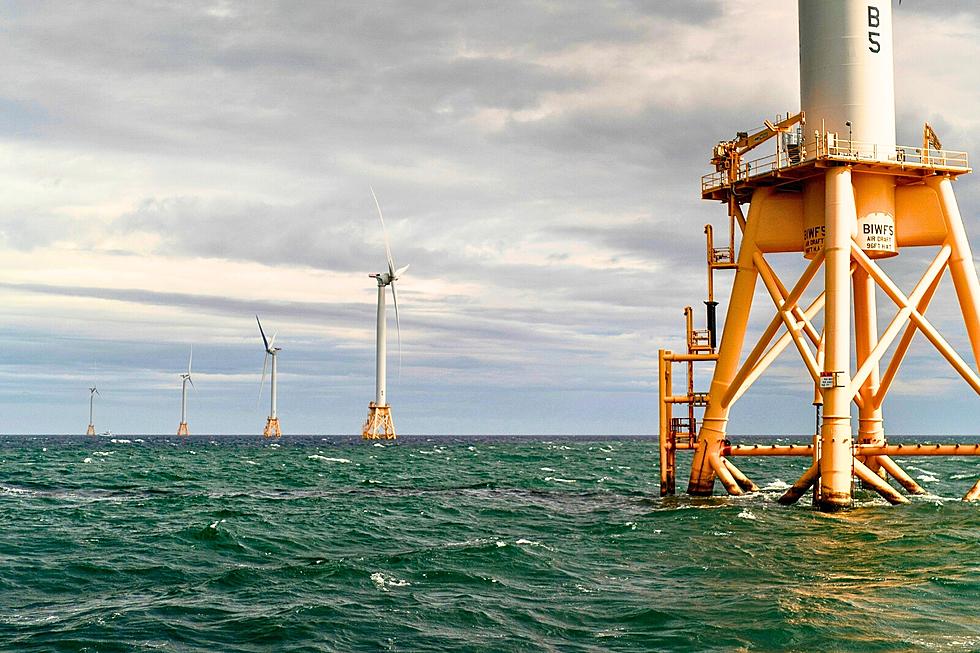
As NJ ramps up offshore wind power projects, much remains unknown
POINT PLEASANT BEACH — As the U.S. races to build offshore wind power projects, transforming coastlines from Maine to South Carolina, much remains unknown about how the facilities could affect the environment.
And that worries some people, particularly those who depend on the sea for their livelihoods.
“We don’t have the science to know what the impact will be,” said Jim Hutchinson, managing editor of The Fisherman magazine in New Jersey. “The attitude has been, ‘Build it and we’ll figure it out.’”
The wind power industry disputes such claims, citing years of studies.
So far, four offshore wind projects have been approved by the federal government for the U.S. East Coast, according to the American Clean Power Association. Ocean Wind I, the first of two Orsted projects in New Jersey, will place 98 turbines about 15 miles off Atlantic City and Ocean City, generating power for 500,000 homes.
South Fork Wind will place 12 turbines in the waters off Long Island, New York, about 35 miles (56 kilometers) east of Montauk Point, to power 70,000 homes. And Vineyard Wind will place 62 turbines about 15 miles (24 kilometers) off Martha’s Vineyard, generating enough electricity to power 400,000 homes.
Those projects are in addition to the planned Revolution Wind development, about 15 miles southeast of Point Judith, Rhode Island, with 65 turbines powering nearly 250,000 homes. Numerous others have been proposed, and the U.S. Bureau of Ocean Energy Management plans to review at least 16 offshore wind projects by 2025.
“All this is happening so fast,” said Greg Cudnik, a recreational fisherman, bait and tackle shop owner and party boat captain from Ship Bottom, New Jersey. “Science takes time.”
A joint study in March by two federal scientific agencies and the commercial fishing industry documents numerous impacts that offshore wind power projects could have on fish and marine mammals, including noise, vibration, electromagnetic fields and heat transfer that could alter the environment.
Like numerous existing studies, the report pointed out the complexities of how the structures and cables might interact with marine life. For instance, turbines can attract some fish and repel others.
The March study said large underwater platforms are rapidly colonized by smaller, bottom-dwelling marine life, including shellfish and crabs, which in turn attract larger predators like black sea bass. At the same time, cloudy water from turbine operations, noise, vibrations and electromagnetic fields could also make species leave an area.
In most instances, report authors agreed that more studies are needed.
Research in other countries also is also nuanced. Some European studies have shown that crabs and lobster are attracted to harder sea bottoms that support wind turbines. Others, including flatfish and whiting, were shown to leave those areas.
Substantial research already exists. The U.S. Bureau of Ocean Energy Management has posted a half-dozen or more studies on its website every year since 2016; in several instances, the studies called for further investigation and analysis.
Phil Sgro, a spokesman for the American Clean Power Association, said the industry believes sufficient scientific studies exist to establish that offshore wind development can be done “in a manner that is both economical and environmentally responsible.”
Opponents blame ocean floor preparation for causing or contributing to the deaths of 70 whales on the U.S. East Coast since December. But three federal agencies say there is no evidence the two are related.
The U.S. fishing industry — both commercial and recreational — has numerous concerns about offshore wind impacting operations in places long available for fishing with minimal interference.
They fear electromagnetic fields emitted from underwater power cables could deter or harm some marine life. They worry about being able to safely navigate around the turbines, and about being prohibited from productive fishing grounds on which they have relied for generations.
They also worry that unforeseen consequences could reduce catches and trigger government limits on how much can be caught if fish stocks diminish.
And while some companies have voluntarily agreed to compensate fishermen for any economic damage, there is no mandate requiring it. The federal government has endorsed — but not required — compensation to the fishing industry for negative effects from offshore wind. Eleven states are considering setting up a regional fund to administer such payments.
On Monday, the U.S. Bureau of Ocean Energy Management released an environmental impact statement for the proposed Empire Wind project in New York, designed to power 700,000 homes. It determined that the project could have “moderate to major” impacts on commercial fisheries, and “minor to moderate” impacts for recreational fishing, although minor beneficial effects could also occur from the creation of an artificial reef that will attract some fish.
Windfarm projects proposed for NJ coast — and what they might look like
LOOK: 19 Drinks Only '90s Kids Remember
More From 94.3 The Point






